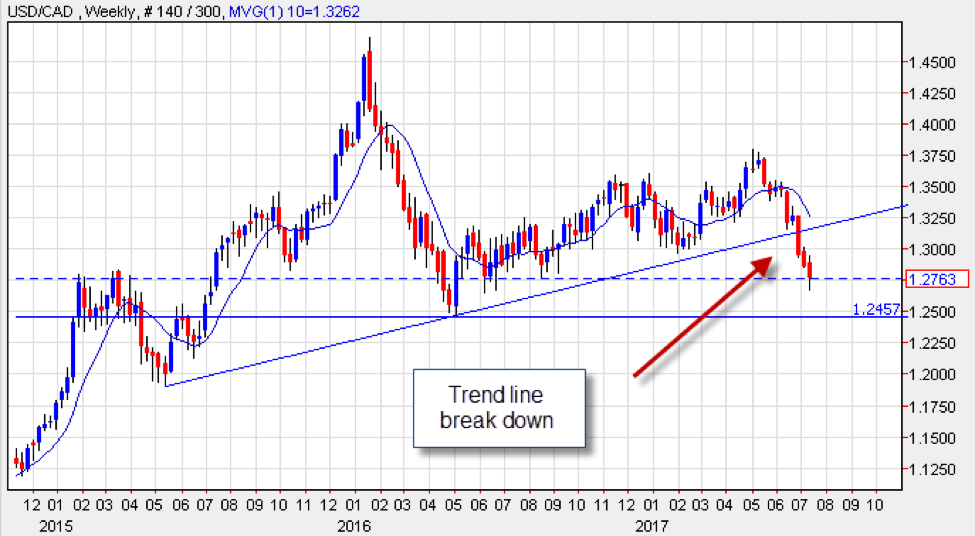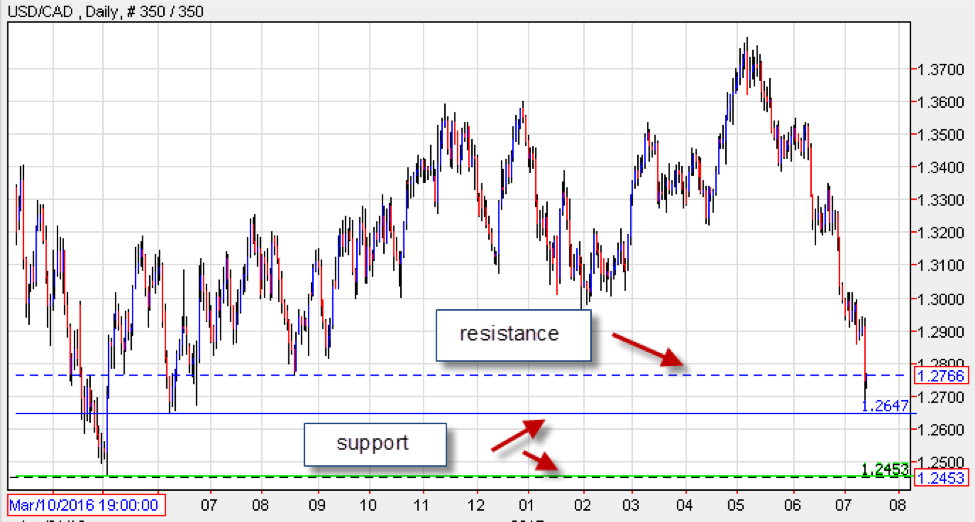 Trading is a business and like any good business it requires trading discipline and positive habits to have the best chance at success. Most traders fail to think about how to incorporate the right mindset and discipline into their business plan. Instead most focus primarily on their strategy and how much money the strategy can make.
Trading is a business and like any good business it requires trading discipline and positive habits to have the best chance at success. Most traders fail to think about how to incorporate the right mindset and discipline into their business plan. Instead most focus primarily on their strategy and how much money the strategy can make.
Most top performing traders have come to realize that trading psychology and discipline are integral to their overall success. You have to feel comfortable with the trading process and work on your execution skills before you can build a consistent track record.
Creating a Trader’s Mindset
Before you even put on your first trade you need to take a step back and think about what you are doing. The process of trading entails accepting a certain amount of risk to receive a specific reward. And the greater the risk the larger the potential reward.
Also you need to understand that you are participating in a business where you are trying to make money based on probabilities around a perceived edge in the market. If you want to build a long term successful track record, your approach cannot rely on luck or gambling. You must know what your edge is, and if you don’t then you most likely do not have one.
Every business has pitfalls and trading is no different. When you are in the business of selling fast food, there is always the risk that your refrigeration breaks down, leaving you with unsellable inventory. But just because this risk can occur, you cannot be fearful each time you purchase food as inventory. You need to understand that there are risks you need to accept and there will be times that you will lose money. Losing trades in the market are normal and inevitable, and do not speak to your self-worth in any way.
Just because you have a losing trade or a string of losing trades does not mean you should be fearful that your entire trading strategy is worthless. A sound strategy should be based on the notion that you will win more on an average trade than you lose, but that you will not win every time you place a trade.
A fast food operator can suffer from inventory loss due to refrigeration issues and can take a loss because of it in a specific month, but he would not opt to close his store due to this incident. Instead, if this incident happened more than expected, then he would reevaluate his business, and try to determine what was happening and adjust accordingly. If he started to fear that his business would collapse each time he purchased inventory, he would start to make decisions that could be counterproductive to his business. Trading currencies is a different type of business with different challenges but the core concept is the same.
 Understanding Fear in Trading
Understanding Fear in Trading
Fear has a way of changing the decision you would normally make. The book, “The Disciplined Trader by Mark Douglas” describes how he nearly lost all his capital because of bad trading decisions that were driven by fear.
His experience with his emotions led to a self-examination, which led him to the conclusion that his trading was unmanageable because he did not have the correct trader mindset. While the book focuses on how your emotions effect trading, it more broadly describes how fear can get in the way of your everyday life decisions. His goal was to teach readers how to control their emotions in trading.
One way to try to eliminate fear or remove the emotional aspect of trading is to try to incorporate practices that help you become a more disciplined trader. This can mean creating a routine such as only trading the markets during the most liquid times, having only one or two positions open at a time, or any other criteria that you feel would enhance your process. A disciplined trader would set their own parameters, but the more business like your trading becomes the better your bottom line will be.
Develop a Business Plan
As we mentioned, trading is a business, and part of your business includes revenues and expenses. Most businesses account for expenses, which can be expected or unexpected. For example, there are times when Amazon charges you for next day delivery that does not come the next day. If this is the case, they will refund you the amount they charged for next day delivery, but they will incur costs for this process.
Part of trading is accepting losses and it helps to think of losing trades in terms of business expenses. If you win 60% of the time and lose 40% of the time and your gains and losses are approximately equal amounts, you will have a winning strategy. If this is the case, why would you be fearful when you lose money on a trade? If you are expecting to lose 40% of the time, then a loss is a matter of fact on 4 out of ten trades on average. Nobody wants to lose money, but by fully recognizing that losing trades are inevitable, you will be better prepared to deal with negative outcomes and won’t treat a loss as something that you fear.
Fear can and should arise if you decide to take a risk that is outside your prescribed trading plan. An example would be if you decided that you would ignore a stop loss and continue to ride a position or even add to a losing position. Here you made a decision that can generate fear as it was unplanned, and haphazard, and is counter to staying disciplined in trading.
Develop Good Trading Habits
One way to avoid allowing the fear of losing money to overwhelm you is to develop good trading habits. This can be a routine that allows you to work methodically and consistently.
You want to get into a routine that you can follow daily. An example of a routine could be that every morning you look at an economic calendar. This will tell you what you should expect that day, as well as, what is coming out the following day or even during the balance of the week. This is important as it helps you define headline risk, which might help you avoid putting on a position that could adversely move against you. For example, if you are a purely technical trader, you might want to avoid putting on new positions on extremely volatile days such as NFP day.
There are many content providers that have financial calendars, including Bloomberg, The Wall Street Journal and Reuters. Go through the process of finding the one that is easiest to read and provides you with the information that will best suit your needs.
Keep Up To Date With Market Moving News
While there are some automated trading systems, such as a systematic technical approach, that do not require any discretion, if you plan on trading the markets using a combined approach that requires discretion then you should be up to date with the news that is moving the markets.
Generally, markets trade in equilibrium and change when new information is available. By reading the news every day, you will be stay up to date with market moving information which will help you generate your own market view.
There is a lot of financial news that is published every day, and it’s nearly impossible to read all of the news that is printed. You need to get into a routine where you read news that is pertinent to the products you are trading. For example, if you are not planning on trading the Singapore dollar, then Singapore specific news will not be pertinent to your trading strategy and might take up time that you might better utilize to read something else. At the same time, while most traders do not trade the Chinese Yuan, the news surrounding the second largest economy can have a profound effect on the currency markets. You need to find out what is important for the instruments that you trade.
Since markets move when new information is available, you should try to anticipate when there could be market moving events that are not priced into the market. There will always be situations where information becomes available that you did not anticipate, but the more prepared you are the easier it will be to handle adverse events.
Study the Charts
If you are an active trader that looks at the markets regularly, you want to set up a routine where you evaluate the charts of the securities you plan on trading. If you are looking for intraday moves, then you want to have your charts up in front of you and look at them before you start your trading day.
If you are a less active trader, it’s important to get into a regular routine. One of the best ways to view charts is by beginning with a broad view and then narrowing down to a more micro view. You can start on the weekend or before the week starts, by looking at weekly charts of currency pairs or the securities that you plan on trading. A weekly chart will provide you with a broad view, and describe the long term trend or consolidation that a currency pair is experiencing. There are many things that you might observe when you look at a weekly chart that will not be obvious when you look at a daily or intra-day chart.

For example, the weekly chart of the USD/CAD currency pair shows that prices have broken down through trend line support and are poised to test target support near the May 2016 lows at 1.2457.

After evaluating the weekly chart, you can then move to a daily chart. The weekly chart will allow you to look back in time to target longer term levels of support and resistance. If you only looked at 1-years’ worth of data on the daily chart, you probably would not have seen this information and that is why looking at a weekly chart can help you make important trading decisions. If you don’t like to constantly toggle to the weekly chart, you might consider printing out the weekly charts and looking at them on paper.
Re-evaluate Your Open Position Risk
Trading is the process of accepting risk. Each day, you need to reevaluate the risk that you have on and determine if it is in line with your initial risk parameters. For example, does a trade where you planned on risking half of what you expected to gain still have those parameters. Has something changed to make the risk more extensive? Was there any new information released or will there be future information released that could change the risk profile. If you are planning on trading a discretionary portfolio, this process if very important. If on the other hand you plan on trading with an automated trading system, then your daily reevaluation of risk is less of an issue.
A Systematic Trading Approach
A systematic approach where you back test a strategy and then let it run on autopilot helps remove some of the emotions from trading. Much of the work that you plan on doing with a discretionary account is removed with a systematic approach, since you will let the system determine the entry, take profit and stop loss levels.
Many traders feel that trading a system is easier then trading a discretionary account as the human emotion is removed from making decisions. The primary decision you need to make when you are trading using a system is whether to keep, adjust or abandon your system.
Obviously, it’s nearly impossible to remove all human emotion even with a systematic approach. You will be happier when you are making money trading and less enthused when you are losing money. What is important is that you keep your emotions in check. You need to give a new system the appropriate amount of time to determine if it works. Once you evaluate the back tested results of your systematic approach, you should determine what you are expecting, and what you should do if the results in real-time are not as you planned.
Trade a Style that Fits your Personality
Some traders like to sell into significant strength and buy when prices are at their weakest, but if this style does not fit your personality, then it will be very hard for you to execute effectively in these situations.
There is a saying that some traders live by which is “don’t try to catch a falling knife”. This means that you can always enter a position once the market has stabilized a bit. Despite this well-known saying, plenty of traders jump in, looking for a quick rebound, only to get flattened by a wave of selling.
With this in mind, there are plenty of bargain hunter traders out there whose trading personality fits this style and want to make money by effectively trying to catch that falling knife. If you are too faint of heart for this style and you like trading pullbacks inside a trend better, then make sure your strategy incorporates catching a trend or a range breakout instead of going against the grain.
When you trade a style that does not fit your personality, you will become fearful when the market moves against you. For example, if your strategy is to dollar cost average as a currency pair moves lower, the fear of losing money might drive you abandon your trade plan before you have a chance to see if the strategy works.
Fear has a way of making you do things that are not in line with your strategy. Instead of having a mental stop in the market, place a hard stop, and let the market take you out to avoid getting an itchy trigger finger and exiting before you reach your stop loss.
Summary
Emotions can play an equal if not a larger role in determining your success as a trader than the strategy you develop. For this reason, you cannot underestimate the importance of discipline as a trader. There are stories of countless traders who have had less than successful careers because they were unable to develop the proper trader mentality.
For this reason, you should take several steps to enhance your discipline in trading. Spend some time developing your own customized routine which can include, reading the news on a daily basis that can affect the securities that you are trading.
Look at charts, including weekly charts, which will provide you with a big picture view of where your currency pair is going or likely to go. Re-Evaluate your risk and determine if the risk reward that you are currently taking is the same as the risk profile that you analyzed when you initially placed your trade. If you work on these steps and set up a routine you will find that you will enhance your discipline in forex trading.